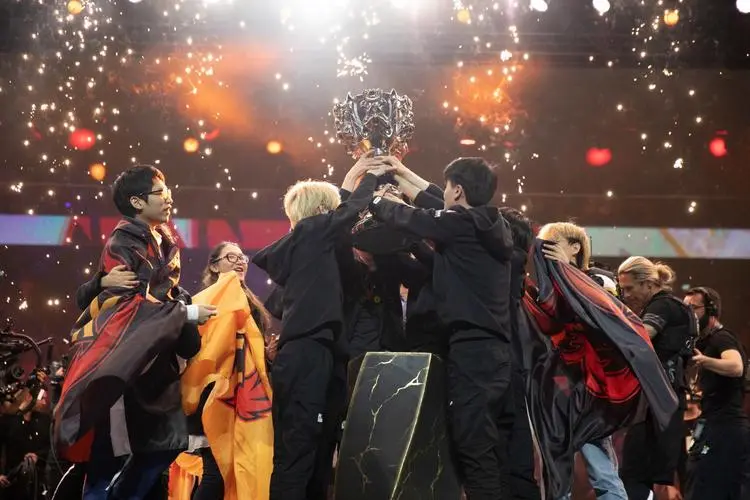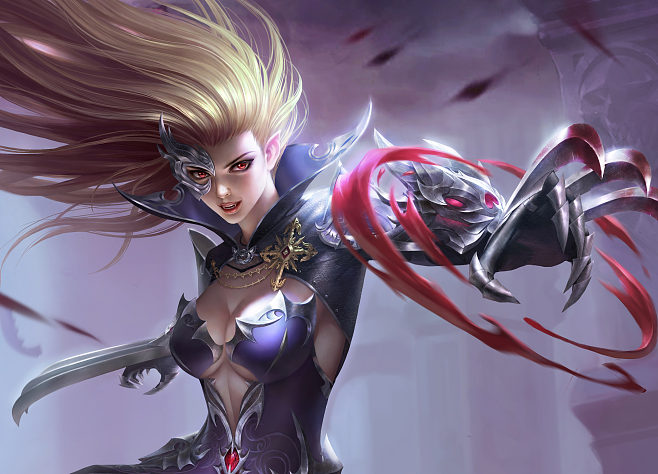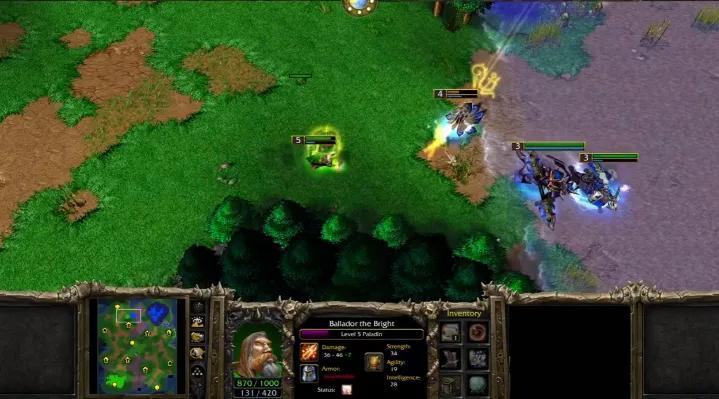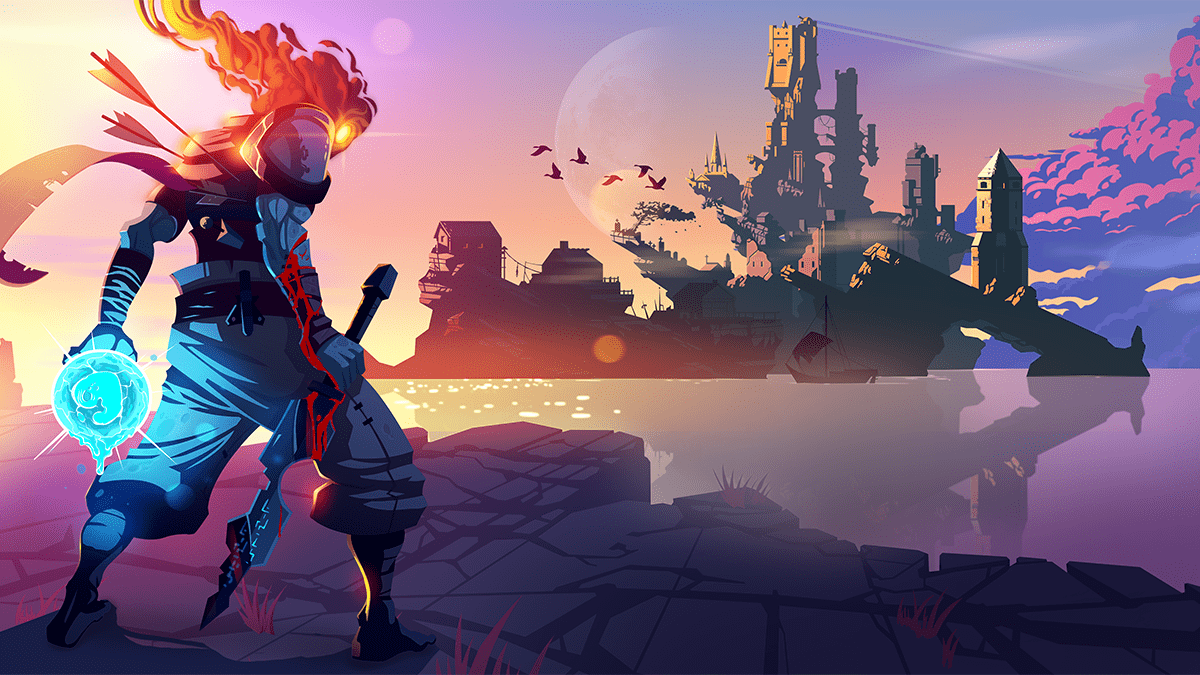Is one of the hottest American dramas of the year really perfect?
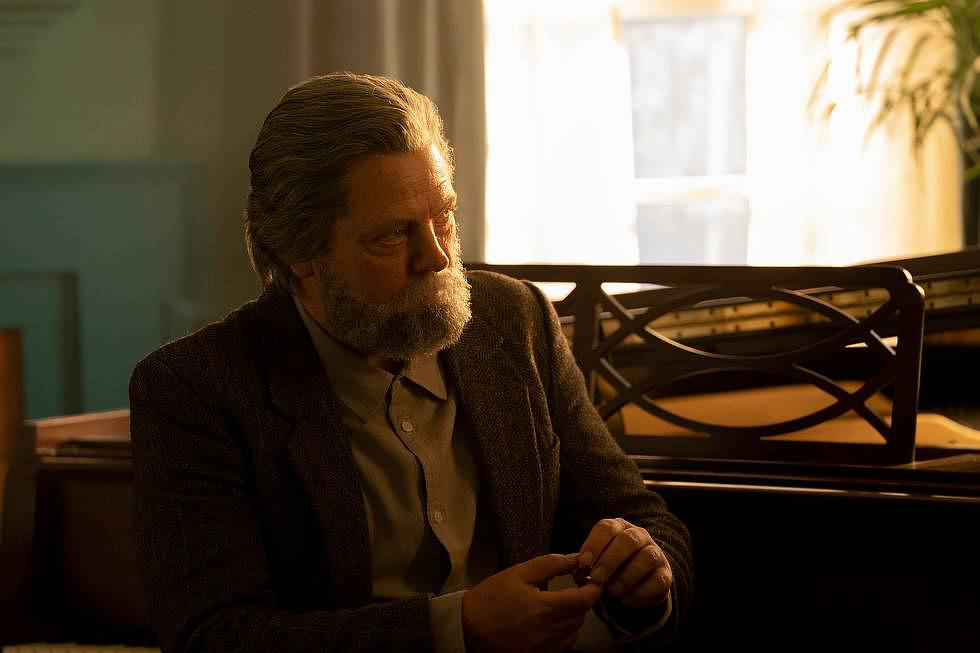
The first season of The Last Survivor has just finished, with a steady 9.1 Douban rating and praise from the foreign media. This is Naughty Dog’s turnaround after the Waterloo of Mystic Seas, and one of the most successful game adaptations for film and television in history.But film audiences and gamers may have different opinions on how to judge this ‘success’.HBO’s The Last Survivor does stay true to the original in terms of storyline, set design, characterisation and course of action, continuing the strengths in characterisation and thematic intent (in other words, further enhancing those parts that are more cinematic in narrative), and it’s a wonderful text that fans, as well as the general non-gamer audience, can take in without a problem.
But in the case of gamers, the catharsis is lost with the massive cuts to the action, the plummeting density of monsters and the elimination of claustrophobic spaces – the tangible action of the game is gone, and Joel and Ellie’s journey becomes a straightforward one, with episode six, for example, becoming an unadulterated scenery-checker.
As an episode-oriented game, The Last Survivor is uncomplicated, moderately difficult at best, and even if you choose the highest Survivor difficulty, you can still get through it in a manipulative assassination mode. Its call to gamers comes from a kind of embodied action and survival experience in a post-apocalyptic setting. Joel doesn’t have the usual heroic superpowers and bouncing power, so the action is entirely constrained to a realistic level, traversing the darkness in a series of back chokes, bottle-throwing molotov cocktails, head-slapping bricks and flame-throwing manoeuvres.
And the general shock of the cinema audience was to discover a game that amplifies the language of cinematography and scene scheduling to the extreme, with over two hours of material edited out of just the animation sections. It was the closest thing to a film ever made, in gamer parlance, “adding action to film” rather than the traditional “adding film clips between action scenes”.
The documentary “The Last Survivor Production Special”, which was released with the PS4 disc that year, gives us a glimpse into the systematic production process at Naughty Dog, which had a well-polished story script and built on it with the motion capture technology popularised by Avatar and The Adventures of Tintin. Naughty Dog’s Vice President, Neil Druckmann, who is just in his early thirties, sat in the director’s chair on set and took on the responsibility of scene scheduling – in other words, the game is very much a live-action animated film based on motion capture.
This could be interpreted as the game reaching out to the film, and The Last Survivor became a landmark work of film-game fusion in that it found the common denominator between the two. This is something that series such as Final Fantasy, Tomb Raider and Resident Evil have tried and failed to fully realise, not forgetting of course that game adaptations of major films such as The Lord of the Rings and Harry Potter during the same period also ended in conspicuous failure.
The Last Survivor has been remade twice between the decades, with updated graphics and largely unchanged content. From its inception, it was a mature work that combined the best of both worlds, so much so that audiences longed for it to be adapted for film and television one day, as it was exceptionally well suited to the big screen narrative.
But on the other hand, given that the freedom of film and television production is not as great as that of CG animation, some may question the need for a film and television adaptation of an otherwise highly cinematic work, or whether such a move is closer to a remake than an adaptation.
So from a gamer’s point of view, HBO’s The Last Survivor could be described as a light soup, focusing on the story, amplifying and enhancing some of the informative background details, but heavily cutting out the action.
The deletion of those sea counts of runners, followers, giants, and all those different coping props and strategies was a loss that inevitably came with a simultaneous emotional loss of cognitive storytelling – after all, Joel and Ellie’s bond was built during the intensive battles of this desperate escape.
With the removal, the emotional part of the HBO episodes, while still present, is still less effective than the easy mode or the ‘just enjoy the graphics’ mode that players often say they can get through, or even simply reading the game’s cheats.
Film and TV viewers who have not played the original game, on the other hand, can see it perfectly as a true post-apocalyptic story, and HBO does appreciate the driving mechanics of the story itself – the setting of Joel as the anti-hero, who exists as the protagonist but never needs to be morally identified. This post-apocalyptic existentialism is itself ‘amoral’ (not the same as amoral), and if its cosmopolitan interpretation began with Asimov’s Nightfall (also translated as Higurashi), it is not difficult to see such a social paradigm in Alfonso Cuaron’s Children of Men.
If Joel and Ellie can be understood by gamers, there is no barrier for film audiences.
Children of Men.
With a lone wolf like Joel, a survivalist like Bill, a cult leader like David and an emotional resistance leader like Kathryn, they each have a character thickness that matches the setting of the story, and the creators are eager to capture the essence.
While these manipulations have certainly enriched the details, enhanced the writing and expanded the characters to a certain extent, they also constitute a kind of artificial interruption in the main story. The most controversial episodes are “Bill’s Town” in episode 3, which fleshes out Joel’s life story and develops his relationship with Frank into an almost cinematic chapter of its own (in the original game, only Frank’s hanged body and a letter he left behind), and “Lost” in episode 7, which turns the game’s DLC into a stand-alone episode by positively revealing the past memories of its heroine, Ellie.
Objectively speaking, both episodes do have the ability to enrich and expand the message, especially the third episode, which captures the life-and-death romance of two middle-aged men to an almost fantastical level and has unsurprisingly become a hit in the gay scene.
It admittedly has a deep and touching side, but in terms of how the whole series is lined up, it’s more of a beefed-up honey, part of the typical bootleg trafficking and feeding mechanism. It’s also not like the DLC in the game, as there are no action elements, only years of goodness, and as a sequel inserted as an extra, its problem isn’t so much with the story or the themes, but that it’s not successfully compatible with the series as a whole.
Episode 7, a remake of the original DLC, is a relatively stand-alone memory extra, which the creators chose to include in the episode more with the presentation of Ellie’s sexuality in mind. Bella Ramsey (or Lyanna Bear Island in Game of Thrones) plays Ellie in a more masculine light than in the original game, a tweak perhaps to achieve internal symmetry: the gay male in the third episode is balanced by the lesbian in the penultimate episode in a delicate story line, but the creators’ utilitarianism in making conversation, crowd-pleasing and ratings-worthy is extremely spicy.
In terms of the original work, these are carefully polished details, a name, a letter, leaving enough room for imagination, all of which are the art of narrative. But the episodes are so straightforward and intuitive that this white space and reverie loses out to the typical attention economy.
In my opinion, of the two DLCs featuring Ellie in the game, “The Mall” needs to be retained, as it is closely linked to the main quest, which is the story of Ellie’s desperate attempt to grab a first aid kit in order to stitch up Joel’s wounds, and can effectively advance the emotional identity between the two It is more suited to the extras – parallel expansions to the film and TV series, similar to the game’s DLC – rather than being blatantly merged into the main storyline.
In this way, the film and television adaptations of The Last Survivor reflect an inherent contradiction, in that firstly it is indeed grounded in story and emotion at the expense of cutting back on action and movement, but on the other hand they do not seek narrative coherence, but always seek to develop those detailed gags that are possible. While such character one-offs or recap chapters are needed to enrich the details in that type of returning season American drama that can easily be 24 episodes long, it is too much of a luxury to devote two full episodes to execute such an operation for a miniseries that is only nine episodes long.
The original film’s journey of Joel and Ellie across America is a tightly woven thread of action, interspersed with different spaces and different cultures – stations, museums, hospitals, record shops, resorts, etc. – that are symbols of the fall of civilisation due to the plague and maintain a relatively unified visual landscape. Naughty Dog’s creators have been calculating the depreciation of 20 years of catastrophe in their designs and have given specific forms of representation: dirt, dust, cracks, rust.
These visuals, which can be freely changed in games and animation, become the most difficult thing to recreate in real life, and the episode’s environments are somewhat limited to locking in interiors and locales and avoiding large landscapes (or masking them with night curtains) as much as possible. This actual visual presentation is perhaps the most costly and time-consuming part of the show, but the results are also notoriously difficult to describe, with the buildings and streets (especially in the long distance scenes) appearing too clean, many of the interior objects gathering no dust, and even avoiding the most deadly spore infection in the original.
The two decades before and after the plague serve as an interval, 1993-2013 in the game and 2003-2023 in the film, the latter coincidentally serving as the metric for the new century plague, which began in the year of Sars and ended in the year of the pandemic’s end.
This timeline gives The Last Survivor a summation of the times, and the release of the film version is well timed. The moral naturally adds to it, and there are parts of the show that are appropriately heightened.
For example, the final episode’s appearance of Ashley Johnson (who is also the motion capture/voice actress for Ellie in the game) as Ellie’s mother giving birth to her daughter shows a kind of plague logic: the mother is bitten during childbirth, and Ellie’s birth is at the same moment as the infection of the bugaboo fungus, so much so that the bugaboo fungus sees Ellie as one of a kind and is able to live with her.
This is an implicit ‘co-existence with the virus’ position, and points to the logic of possible co-evolution of man and virus/fungus, just as David sees the cordyceps as a salvation.
Equally rare is the way the whole show tries its best to defend a realistic aesthetic while fitting in and elevating its themes – an admirable effort even if there is a lot of heartlessness in the restoration of realistic scenarios here.
Perhaps HBO’s grand vision for the show was to reinvent the whole human community, hence some revamping of individual characters, with the male lead Joel going from a standard white American to a slightly languid Latin male like Pedro Pascal and his daughter Sarah being of partly black heritage. Asian characters like an Indonesian botany professor and officer have been added to the original’s several black figures of Henry, Sam and Riley.
Considering that the US in the original title has a different connotation, it is natural that HBO is taking political correctness into account in depth by zooming in on the ethnic spectrum so much; but on the other hand, putting many different ethnicities under the frame of US seems to be another ideological haunting, as the subtitle of Neil Druckmann’s comic book for the game, The Last Survivor: American Dream, shows.
The Last Survivor can easily be discussed alongside Hideo Kojima’s Death Stranding, both of which are a journey across America from east to west (a re-enactment of America’s westward movement to build the nation), and both are ironic evidence of the perfect marriage of film and game (as many would argue Kojima is a film director in essence).
Yet unlike Death Stranding, which aimed to rebuild America, The Last Survivor’s original game had an extremely anti-reconstruction character – Ellie was the central building block of the reconstruction, but the choice Joel gives at the end is to rescue Ellie and destroy the possibility of reconstruction.
It’s a jaw-dropping ‘non-ideological correctness’ or ‘reverse ideological correctness’, in opposition to the tyranny of the ‘majority Fodder’, yet while HBO is making a big deal of including diverse communities and presenting a pluralistic aptitude with force, it also seems to be blurring some of the expressions of the original.
Perhaps this is a ‘fusion stance’ that seeks to maximise ratings and media buzz rather than the bold aggressiveness of Naughty Dog (which was maximised in The Last Survivor 2, which was later controversial and taken down across the internet).
It was perhaps an appropriate compromise between Craig Maxine’s character, and Druckmann’s, that the consensus between the two men was not in the blending of game and film, but in choosing the common denominator from a commercial and cultural standpoint. This implies a conservatism on the part of HBO these days: an insistence on traditional narrative/drama and a cold shoulder to innovation/individuality.
On the one hand, HBO follows in the footsteps of Naughty Dog’s original, in a gesture of identification and total reproduction; but on the other hand, it enforces its hegemony over the game itself with the narrative logic of film and theatre.
If Naughty Dog’s The Last Survivor is the driving force behind the fusion of cinema and gaming, then HBO’s The Last Survivor is a retreat from film and television culture itself, taking the ready-made, very cinematic parts of the game, optimising and amplifying them, then excluding a great deal of the action-oriented parts and filling the squeezed space with topical elements and gimmicks.
This manipulation, with all its gains and losses, is crude in its approach and fails to strike an exquisite balance between thematic, narrative, emotional and operational aspects as the original game does.
But there’s no need to be harsh here, as The Last Survivor remains the superior work in the system as long as we don’t compare it to the original; but the only way we can clarify how conservative and savvy the contemporary hit is really is by comparing it to the original game.
With no disrespect, we could perhaps compare the thinking behind HBO’s adaptation of the show to that of animation great Hayao Miyazaki.
Miyazaki is a writer of many books, but he is in some ways a model of conservatism, not so much in his insistence on hand-drawn, but in his fixation of the core of animation on traditional folkloric narratives.
This manipulation has led to a number of Ghibli masterpieces, but I am more in agreement with the latter’s place and contribution to the animation world than with Mamoru Oshii, who has challenged various manipulations and occasionally flopped.
The same goes for HBO, from The Sopranos to Game of Thrones to Chernobyl and The Last Survivor, which have made a name for themselves as masterpieces and made HBO the cradle of classics, but that doesn’t mean it isn’t conservative, especially at the moment.
It is also a situation in which film and television have been reduced to a declining aristocracy, while games have increasingly become aesthetic pioneers.
In this situation, it should be a foregone conclusion that HBO will continue with The Last Survivor 2, thanks of course to the ratings success and word-of-mouth of the first film.
Perhaps film and television will overcome the inherent barrier of the game’s operational identity and allow the central challenge of the second film to be resolved, but this does not mean that film and television are more inclusive than games, but rather that games are more tense because of their operational properties.
We could also sum up The Last Survivor’s film and television adaptation with this logic: it is indeed one of the most successful game adaptations to date, but it is not an all-around good and enterprising adaptation.
